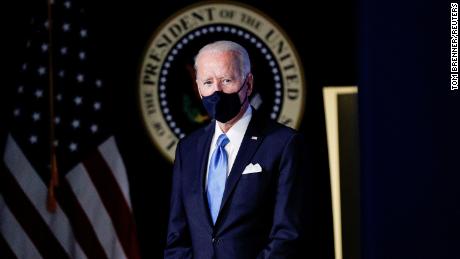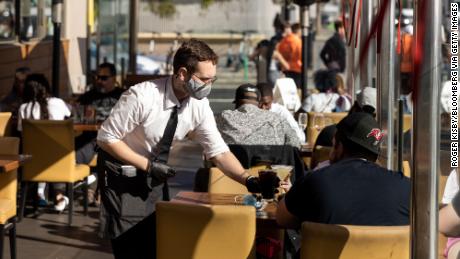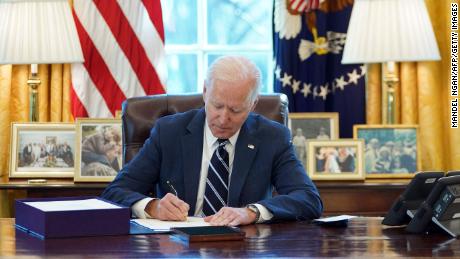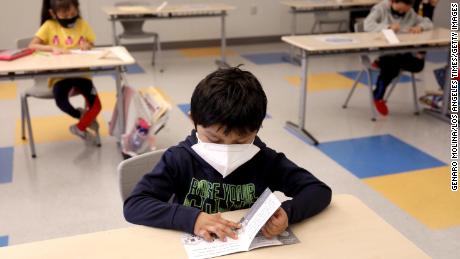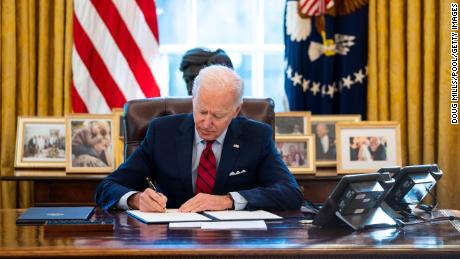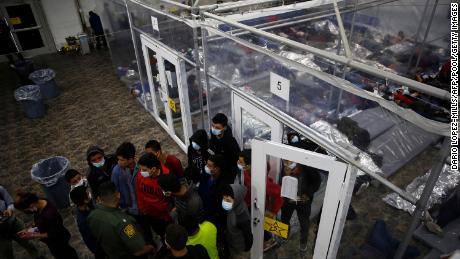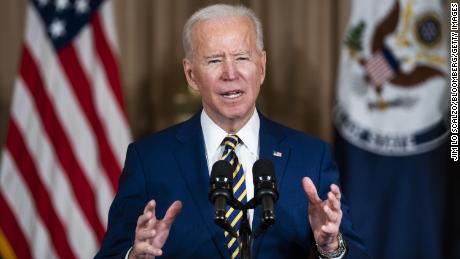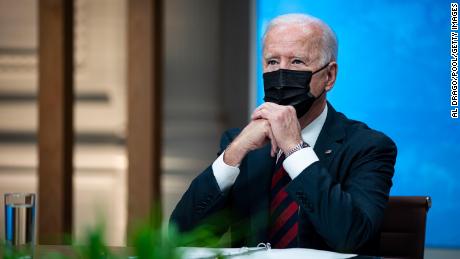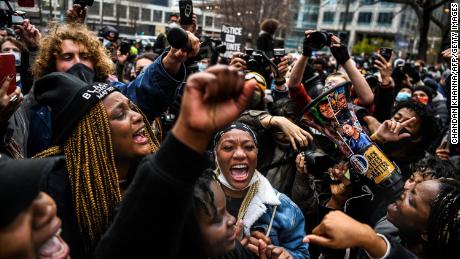The President has moved fast since his January 20 swearing-in. Here’s a look at some of his main goals and how he did.
And Biden has delivered on his pledge to return the presidency to what it looked like before his predecessor Donald Trump, replacing tweets with daily press briefings and bringing in a Cabinet and staff of seasoned experts.
Here are some of Biden’s main goals for his first 100 days and how he did:
Covid pandemic
To increase Americans’ access to vaccines, the Biden administration started a federal retail pharmacy program that turned more pharmacies into vaccination sites. It also opened up vaccinations at community health centers and set up federally run vaccination centers across the country. The President ordered an expansion of the list of eligible vaccinators to include dentists, midwives, paramedics and optometrists, among other professionals, to meet increased demand. The administration also committed to partnering with community organizations to transport seniors and people with disabilities to get their vaccinations.
Biden’s $1.9 trillion American Rescue Plan, which was passed in March, provided billions in funding to bolster vaccinations.
The President has also pledged up to $4 billion in a US contribution to Covid-19 Vaccines Global Access, or COVAX.
Biden has put public health experts and scientists front and center in a number of roles within the administration. He tapped Dr. Anthony Fauci, the longtime director of the National Institute of Allergy and Infectious Diseases, who had a contentious relationship with Trump, as chief medical adviser and elevated the director of the White House Office of Science and Technology Policy to a Cabinet-level position. And his administration restarted frequent Covid-19 briefings featuring federal government’s public health experts, including Fauci, CDC Director Dr. Rochelle Walensky, US Surgeon General Vivek Murthy and Dr. Marcella Nunez-Smith, the head of the White House’s Covid-19 health equity task force.
Economic recovery
Separately, Biden has used his executive powers to expand food assistance, extend the federal moratorium on evictions and continue the suspension of federal student loan payments and interest charges.
Reopening schools
As early as December, Biden was already pledging to get the majority of schools open by the end of his first 100 days in office.
Unlike other countries, the US leaves school control at the local level, and the challenges to providing in-person instruction are not the same everywhere, making it nearly impossible to create effective federal and even state-level guidance as the pandemic wears on. In some places, school authorities faced strong opposition from powerful teachers’ unions.
There are certainly more schools offering in-person instruction now than there were at the beginning of 2021. But it remains unclear whether a majority of schools are offering it five days a week for all students.
Younger students are more likely to be offered in-person learning. As of April 20, elementary and middle schools in a little more than half of the 101 largest school districts in the country are offering full five-day-a-week in-person instruction, according to CNN’s tracking.
Health care
Biden has acted swiftly to strengthen the Affordable Care Act, one of his main campaign promises. His administration has already taken multiple steps to reverse efforts by Trump to destroy the Democrats’ landmark health care law.
That additional assistance was part of the Democrats’ $1.9 trillion relief package. Enrollees will now pay no more than 8.5% of their incomes toward coverage, down from nearly 10%. And lower-income policyholders and the jobless will receive subsidies that eliminate their premiums completely.
Also, those earning more than 400% of the federal poverty level — about $51,000 for an individual and $104,800 for a family of four in 2021 — are now eligible for help for the first time.
The 14 states, and the District of Columbia, that run their own exchanges have also extended enrollment, though the durations differ by state.
Laid-off workers who want to stay on their work-based coverage will receive subsidies that pay the full premium cost from April through September, as part of the relief package.
Immigration
Biden has signed several executive actions taking aim at Trump’s hardline immigration policies, including reversing the former President’s travel ban targeting largely Muslim countries and fortifying the Deferred Action for Childhood Arrivals program after Trump’s efforts to undo protections for undocumented people brought into the country as children.
Biden created a task force focused on identifying and reuniting migrant families separated at the US-Mexico border as a result of Trump’s controversial “zero tolerance” policy, and he revoked a Trump-era proclamation that limited legal immigration during the Covid-19 pandemic.
Biden rescinded Trump’s national emergency declaration, which allowed his predecessor to dip into additional funds for his signature border wall, and called for a review of ongoing wall projects. He narrowed immigration enforcement in the US. The President also directed relevant agencies to ensure LGBTQI+ refugees and asylum seekers have equal access to protections.
Biden went on to end Trump’s so-called “remain in Mexico” policy, which required asylum seekers to stay in Mexico until their immigration court dates in the United States, and began the gradual entry of migrants who still had active cases. His administration also initiated a review of policies “that have effectively closed the US border to asylum seekers.”
Yet the Biden administration has struggled to keep up with the influx of migrants coming to the US southern border, particularly unaccompanied minors, who have been held in Border Patrol stations as officials scramble to find sites to accommodate them.
The Department of Health and Human Services, which is charged with the care of unaccompanied migrant children, announced or opened at least 11 new temporary facilities to try to get kids out of Border Patrol stations, which are akin to jail-like conditions and not suited for children.
On legal immigration, Biden signed an order seeking to reverse Trump-era policies that targeted low-income immigrants, including calling for a review of the public charge rule, which makes it more difficult for immigrants to obtain legal status if they use public benefits such as Medicaid, food stamps and housing vouchers, and reestablished a Task Force on New Americans.
Foreign policy
Biden said the withdrawal will begin May 1, in line with an agreement made with the Taliban during the Trump administration. Some US troops will remain in Afghanistan to protect American diplomats, but a precise number of remaining troops has not been disclosed. US humanitarian and diplomatic efforts will continue in Afghanistan and the US will continue to support peace efforts between the Afghan government and the Taliban, Biden said.
The President has also moved to salvage the US-Iran nuclear deal put in place in 2015 under President Barack Obama, which was abandoned by the Trump administration in 2018.
The US pointed to the Russian Foreign Intelligence Service as the group behind the SolarWinds hack. The White House also said it is expelling 10 Russian diplomats in Washington, including “representatives of Russian intelligence services,” for the hack and the election meddling.
The Biden administration also barred US financial institutions from participating in the primary market for bonds issued by Russia’s central bank and other leading financial institutions. Two days before issuing the sanctions, Biden spoke with Russian President Vladimir Putin and proposed a summit between the two countries later this year.
Climate crisis
Last week, Biden fulfilled his pledge to host a global climate summit within his first 100 days in office. During the event, he committed the US to reducing its greenhouse gas emissions by 50% to 52% below its 2005 emissions levels by 2030. While the goals are part of the Paris climate agreement, which Biden rejoined upon taking office, they are nonbinding and the administration has not rolled out a plan on how the US will meet them.
The wide range of leaders attending the two-day summit included a number of American allies, such as France’s Emmanuel Macron and the United Kingdom’s Boris Johnson, as well as leaders with whom Biden anticipates having a more confrontational relationship, like China’s Xi Jinping and Putin. While some countries reiterated during the summit that they were working toward their previously set climate goals, others, including Canada and South Korea, announced they were upping their targets.
Social justice and inequality
“The Biden-Harris Administration strongly supports the George Floyd Justice in Policing Act and is working with Congress to swiftly enact meaningful police reform that brings profound, urgently needed change,” Domestic Policy Council director Susan Rice said in a statement.
Next steps
Last month, Biden laid out a massive plan to improve the nation’s infrastructure and shift to greener energy.
The roughly $2 trillion proposal, which Congress will spend months on, would provide funding for roads, bridges, trains, broadband, airports, waterways and ports. He would put billions toward manufacturing, job retraining, housing, schools, veterans’ hospitals and federal buildings.
He would also lay out $400 billion to enhance long-term-care services for elderly Americans and those with disabilities, as well as improve the pay of home health workers. To pay for the package, he would increase a variety of taxes on businesses, including raising the corporate rate to 28% from 21%, where it was set by the 2017 Republican tax cuts.
The President is also set to unveil an additional $1.8 trillion federal investment in education, child care and paid family leave during his first address to Congress on Wednesday.
The proposal calls for making community college free for two years, investing in a universal preschool program for 3- and 4-year-olds, providing paid family and medical leave and helping families afford child care. It would also extend or make permanent enhancements to several key tax credits that were contained in the rescue bill.
To pay for the plan, Biden would raise taxes on the wealthy. In particular, he would reverse a key part of the Republicans’ 2017 tax cuts by returning the top marginal income tax rate to 39.6% for those in the top 1%. The GOP law had reduced it to 37%. The President would also raise the capital gains tax rate for households earning more than $1 million annually.
CNN’s Priscilla Alvarez, Nicole Chavez and Kevin Liptak contributed to this report.
![]()




